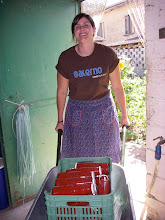Italy and Muslims:
About 600,000 Muslims live in Italy legally but it is hard to estimate the large numbers of illegal aliens. Most of these Muslims come from countries in the 10/40 Window, particularly Tunisia, Libya and Albania. Many speak the Italian language well, attending schools and working in factories throughout the country though a larger number live in Northern Italy.
Cultural Misunderstandings in Italy
Many Arabs from North Africa and the Middle East believe that Islam is the absolute truth and consider it their duty to promote their religion in Italy. However after the September 11 terrorist attacks in the United States, Islam received much attention in the Italian media. Many traditional Muslims found it difficult to reconcile their Islamic beliefs with the cruelty of certain Muslim fundamentalists.
There are over 100 mosques in Italy, 65 of which are in the North. Italian Muslims are increasingly gaining official recognition, which helps them open mosques and Islamic schools. Many Muslims who originally migrated to Italy are now successfully bringing their families to Italy while others are marrying Italian women. In Italian schools, the majority of non-catholic students are Muslim. Cultural misunderstandings and differences between Muslims and Italians are increasingly leading to social tensions. Recently, some Muslims have requested that all crucifixes be removed from Italian classrooms.
Equipping Believers in Italy
During the last decade, Italian churches have started equipping believers in order to effectively evangelise Muslims yet these efforts are terribly small compared to the need. There are very few full-time missionaries who work among Muslims in Italy, and those who do have difficulty coping with all the demands that are placed on them. One effective evangelistic activity, which has been successful during Ramadan is the distribution of the “Jesus” video and evangelistic literature in the Arabic language in Italian harbours and airports. Many Muslims return to their native lands (Tunisians, Moroccans, Algerians, Senegalese, Libyans and others) for this time.
Muslims in Italy generally have a deep sense of religiosity linked to their many rituals, but they lack any certainty about the salvation of their souls. They often have preconceived ideas towards Christianity and Western civilisation, which makes it harder for them to hear the Gospel.
Pray for the Muslims of Italy:
* May Italian Christians have a stronger desire to know Islam and the ways to evangelise Muslims effectively.
* Pray for the precious ministry of the few full-time missionaries in Italy.
* May friendly relationships of trust be established with Muslims. “Friendship evangelism” is the method that seems to bear the most fruit. Love and acceptance from a believer, in a hostile country, can melt the hardest heart.
Background on Italy (World Factbook)
Italy became a nation-state in 1861 when the regional states of the peninsula, along with Sardinia and Sicily, were united under King Victor EMMANUEL II. An era of parliamentary government came to a close in the early 1920s when Benito MUSSOLINI established a Fascist dictatorship. His disastrous alliance with Nazi Germany led to Italy’s defeat in World War II. A democratic republic replaced the monarchy in 1946 and economic revival followed.
Italy was a charter member of NATO and the European Economic Community (EEC). It has been at the forefront of European economic and political unification, joining the Economic and Monetary Union in 1999. Persistent problems include illegal immigration, organized crime, corruption, high unemployment, sluggish economic growth, and the low incomes and technical standards of southern Italy compared with the prosperous north.
Economy of Italy
Italy has a diversified industrial economy with roughly the same total and per capita output as France and the UK. This capitalistic economy remains divided into a developed industrial north, dominated by private companies, and a less-developed, welfare-dependent, agricultural south, with 20% unemployment. Most raw materials needed by industry and more than 75% of energy requirements are imported. Over the past decade, Italy has pursued a tight fiscal policy in order to meet the requirements of the Economic and Monetary Unions and has benefited from lower interest and inflation rates.
About Italy
Population: 58,145,321 (July 2008 est.)
Life Expectancy at Birth: 80.07 years
Ethnic groups: Italian (includes small clusters of German-, French-, and Slovene-Italians in the north and Albanian-Italians and Greek-Italians in the south)
Religions: approximately 90% Roman Catholic (about one-third regularly attend services); mature Protestant and Jewish communities and a growing Muslim immigrant community
Languages: Italian (official), German (parts of Trentino-Alto Adige region are predominantly German speaking), French (small French-speaking minority in Valle d’Aosta region), Slovene (Slovene-speaking minority in the Trieste-Gorizia area)
Literacy: 98.4% — Male: 98.8%, Female: 98%
Italy is now being called an unreached people group as only 1% of the population attend church regulary and less than 1% claim to have a relationship with God.
Subscribe to:
Post Comments (Atom)




No comments:
Post a Comment